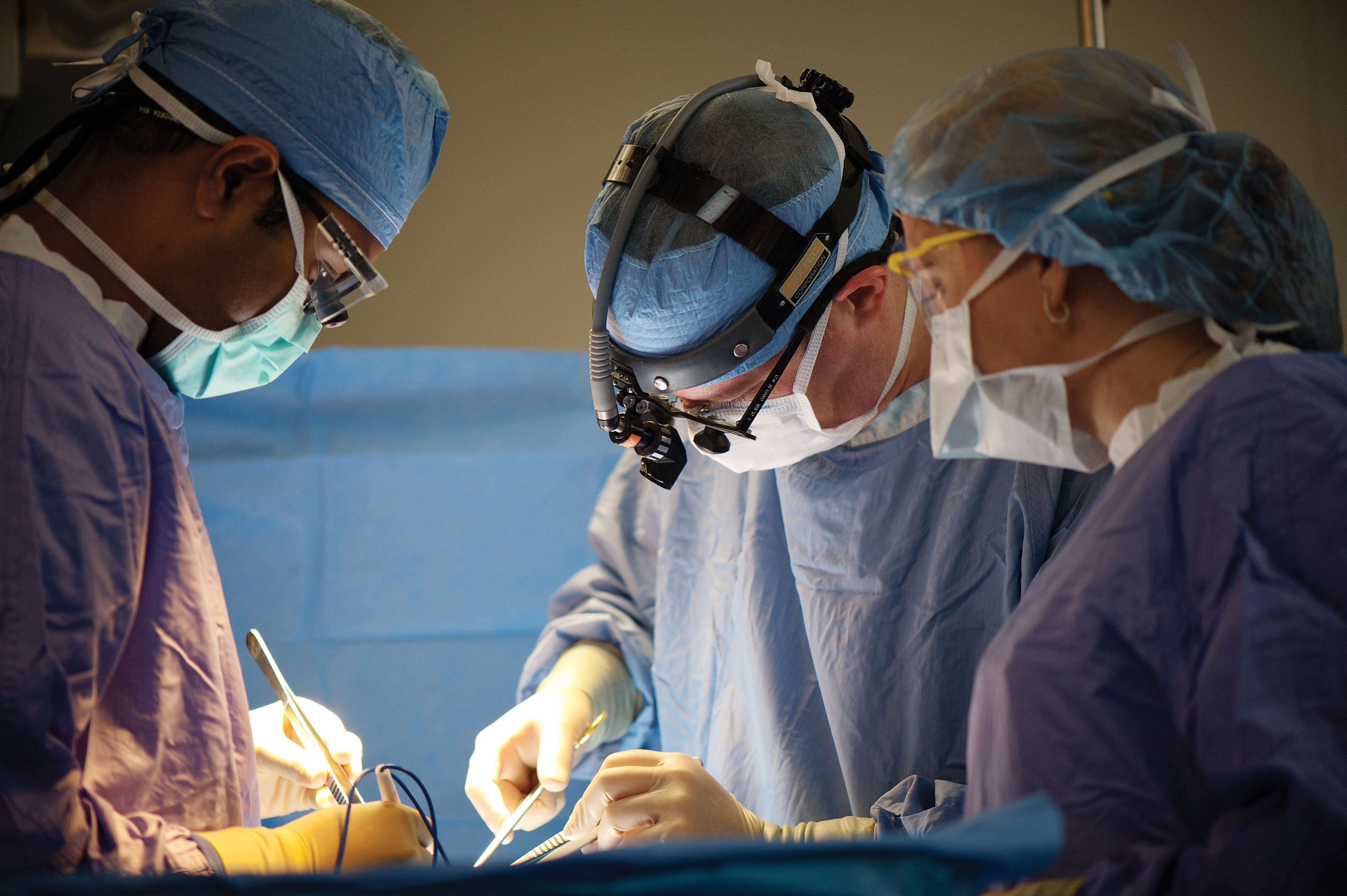Froedtert & the Medical College of Wisconsin Bile Duct Cancer Program
Bile duct cancer is a rare malignancy that calls for a strong multidisciplinary approach to treatment. Physician specialists at Froedtert & the Medical College of Wisconsin treat many patients with bile duct tumors every year, and they are familiar with the subtleties of this unusual disease.

Bile Duct Cancer Overview
One of the key functions of the liver is to produce bile, a thick fluid that helps the body digest fats. Bile is transported from the liver to the intestines through long, tube-like structures called bile ducts. A network of bile ducts branch throughout the liver. In addition, a specific branch of the biliary system called the cystic duct drains bile stored in the gallbladder. The entire system converges to a common channel and drains into the small intestines.
Cholangiocarcinoma is a cancerous tumor that originates in a bile duct. About 10 percent of these tumors arise in a part of the biliary system that is inside the liver. These cancers are known as intrahepatic cholangiocarcinomas. These intrahepatic bile duct tumors are treated in much the same way as other primary liver tumors (for treatment details and more, see our liver cancer section).
The majority of bile duct tumors, approximately 90 percent, arise in a bile duct that is outside the liver. These cancers are known as extrahepatic cholangiocarcinoma. Tumors of this type often obstruct the flow of bile, causing it to back up into the liver. This leads to the symptoms of yellow skin (jaundice) and itching. Extrahepatic cholangiocarcinoma can also lead to liver and kidney dysfunction, malnutrition, and infection of the bile (cholangitis).
Only a few thousand new cases of extrahepatic cholangiocarcinoma are diagnosed in the U.S. every year. Gastrointestinal inflammatory conditions can increase a person’s risk of developing this cancer.
Treatment Options
Surgery
Tumors growing in a bile duct outside the liver can be treated in different ways depending on the location of the tumor. When the tumor is in a section of the bile duct close to the liver, surgery often includes removal of a portion of the liver. When the tumor is nearer to the end of the bile duct, surgery may include removal of part of the pancreas. After a portion of the extrahepatic bile duct has been removed, surgeons perform a reconstruction procedure to attach the remaining bile duct directly to the small bowel. Extensive workups, including scans and endoscopy, are necessary to identify the patients most likely to benefit from surgery.
Radiation Therapy
Some extrahepatic bile duct tumors are too extensive to be removed by surgery. For these patients, radiation therapy in various combinations with chemotherapy can be used to try to control the cancer. Typically, external beam radiation is delivered concurrently with low-dose chemotherapy.
Drug Therapy
Interventional Radiology
Interventional radiologists also perform minimally invasive stenting procedures to treat bile duct blockages and strictures caused by extrahepatic cholangiocarcinomas. A stent is a thin, flexible tube inserted into a duct to keep it open. Relieving bile duct blockages and strictures can help restore liver function, enabling patients to tolerate chemotherapy. A bile duct stent can also serve as a conduit for other therapies, such as the placement of radiation brachytherapy.

